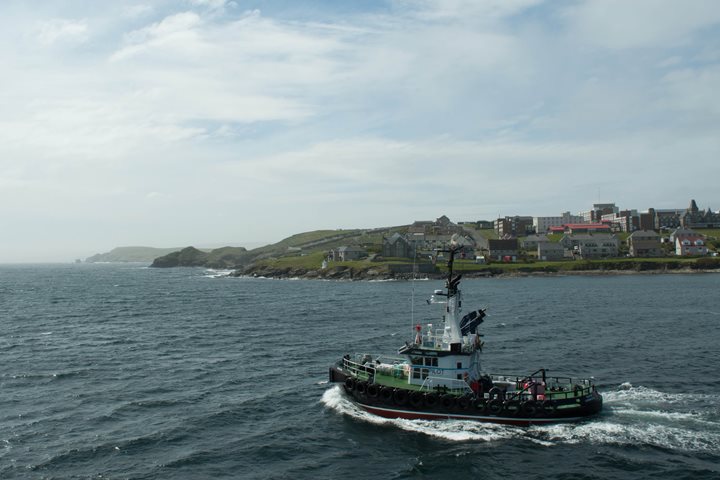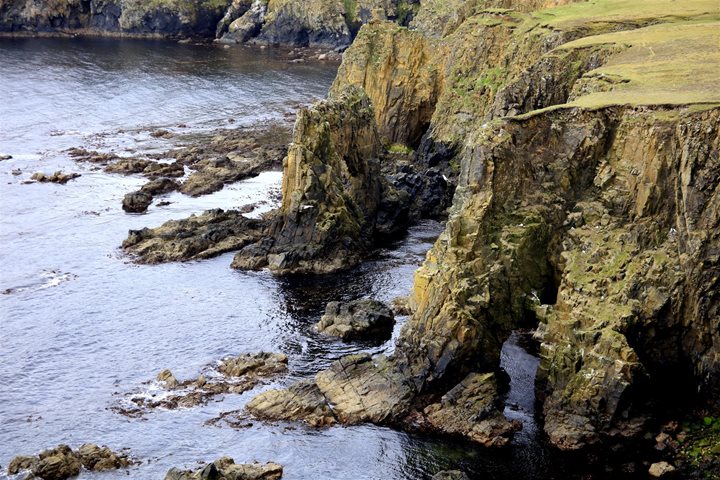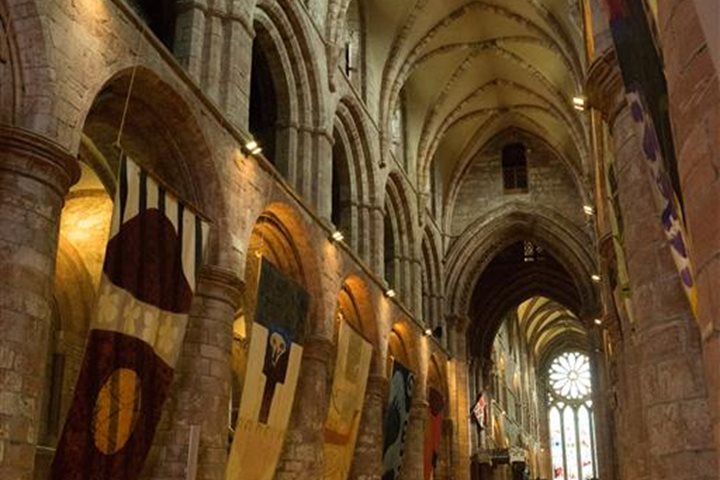The constructions of man seldom rival the majesty of nature. They may mimic perhaps and overwhelm one with examples of engineering genius but careful observation will probably reveal the idea’s source in the natural world. Few are as lucky as we. Today we felt the power of two very different inspirational places; an abbey made by man and a cathedral carved by the sea.
Scotland’s west coast is a maze of islands and islets each with a personality all its own. Iona is barely a dot upon the chart. What drew Ireland’s Columcille to this tiny isle near 1500 years ago? One wonders if it was the sense of peace we felt or did he and his followers create a spiritual bond with the land that will last through all eternity. As we sat upon the crest of Dun I we could close our eyes and hear the sound of the wind and the creaking of rare corncrakes just as St. Columba did from that same point. But eyes wide open we saw a much different sight. Flocks of tourists poured from ferries, large and small and disappeared into the island’s tiny town. They and we did not come to raid as the Vikings did so long ago but to make a pilgrimage to the place that has become the heart of Celtic Christianity. From the Abbey the sounds of hymns drifted into gardens filled with sweet smelling herbs and flowers. Life-like carvings of birds and flowers adorned the cloister columns. Celtic crosses were silhouetted against a sky that alternated between gray and cerulean.
To the north of Iona, Staffa stands, its black basaltic columns reaching skyward. Wild waves have plucked at its shores and snatched the footings from beneath these pillars, carving a domed ceiling and leaving organ pipe-covered walls. The sea played a symphony, the same as that heard by Mendelssohn, with crescendos rising to resounding thunder and falling as dramatically. It echoed from the domed ceiling and vibrated beneath our feet as two of our shipboard family wed at the mouth of this true cathedral. Lush and luxuriant greenery drapes over the island’s cap and along its edges bird life abounds. Shags sat upon the point, their jaunty breeding plumage forming crests upon their heads. Common eider sought sustenance along the edges. But none attracted quite so much attention as the comical Atlantic puffin. We could have sat for hours watching their comings and goings.







